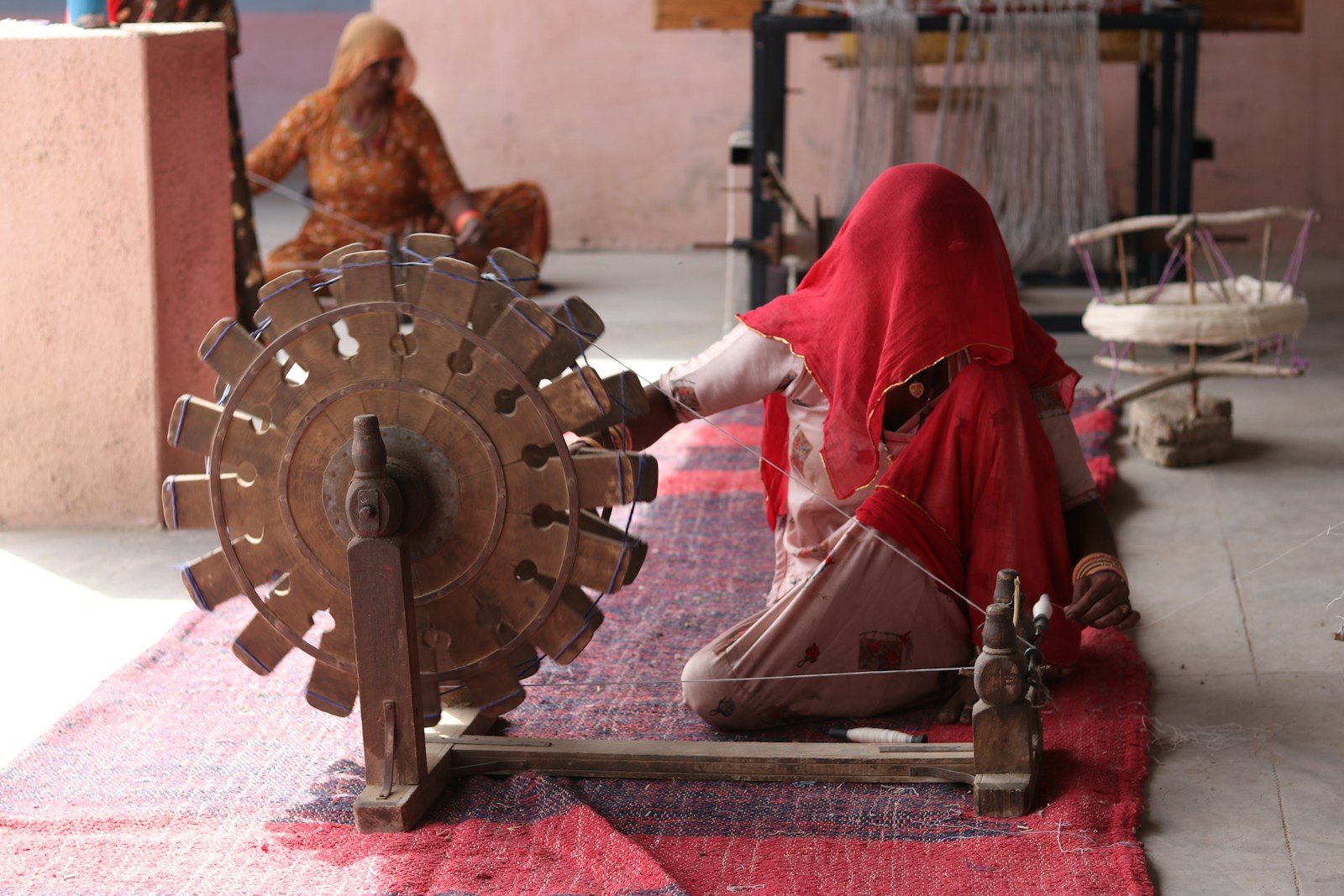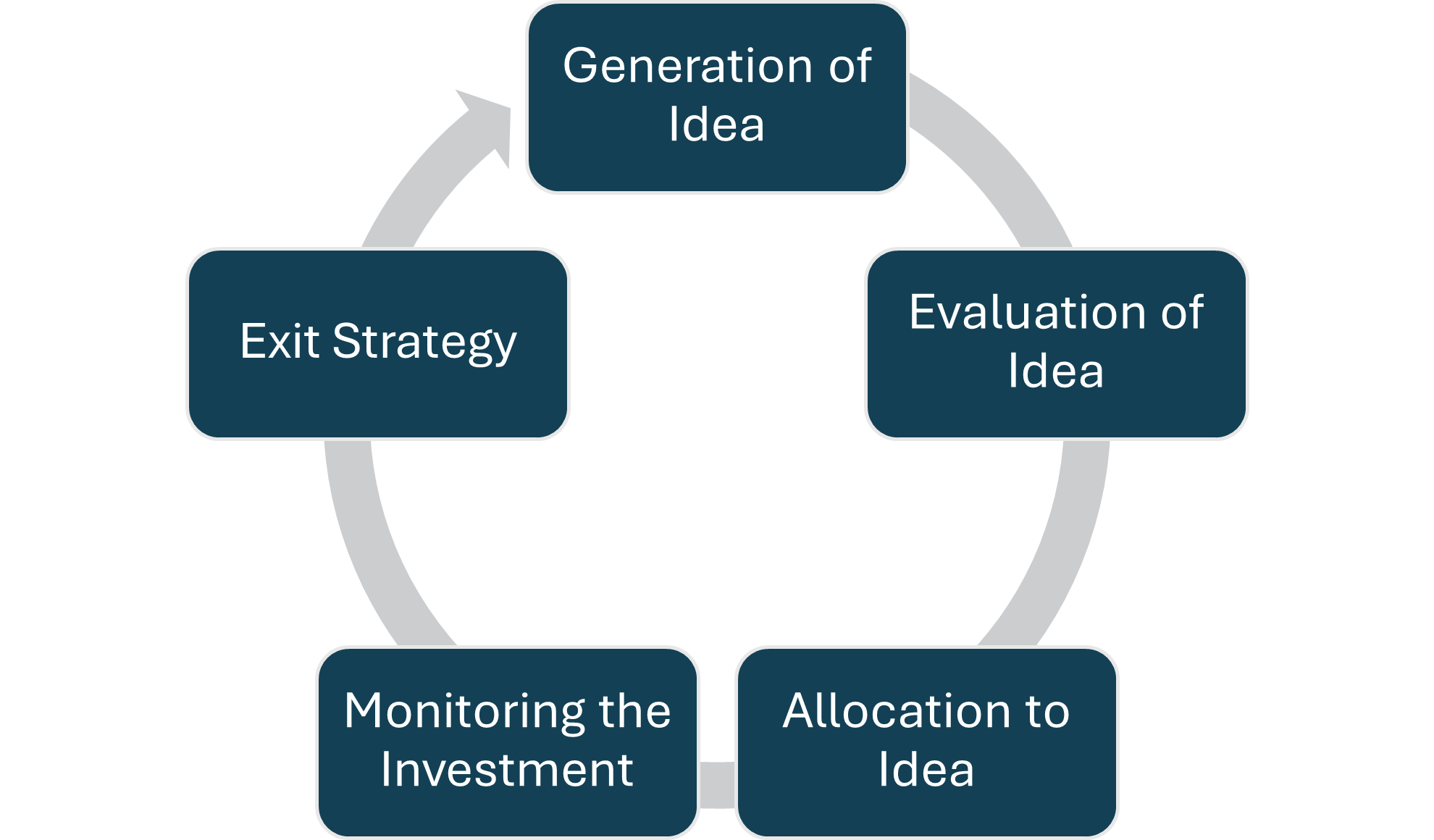This article is inspired by a talk given by Dr. Tapan Parikh, Associate Professor, Cornell University, USA. My heartiest gratitude goes to him for developing and sharing this beautiful metaphor and concept.

We are in an era of hyper fast technology that has created a new problem of too much information. Every company announcement, every rumour, and all news spreads out at the speed of light through platforms like WhatsApp, Telegram, and social media. Now, we must filter out the noise, reduce and fix our “information diet”, otherwise too much information that may be irrelevant to our investments leads to “garbage in, garbage out” in our analysis. I believe that in today’s day and age of AI prompts and superfast technology we are in dire need of “slow technology”, technology that slows us down, so we get the opportunity to be more mindful of whatever it is that we are doing.
One such technology of its time was the Charkha. Introduced by Gandhiji as a symbol of self-sufficiency and freedom, the charkha requires a certain, sacred concentration and dedication to produce output. Spinning cotton yarn on a Charkha is a slow and meditative process of creation. Hence, it can be called a “slow technology”. Similarly, investment is also a slow and meditative process. Outcomes may begin suffering the moment one loses focus on the process of investment and starts getting jittery about realised output. The investment process cannot be accelerated either. Quality of work is far more important than quantity of work when it comes to investing. It is a complex art and science requiring various skills and a deep understanding about oneself. The process of investing is based on the investment lifecycle.

The investment lifecycle consists of the following five stages:
- Generation of investment idea: First and foremost, investment ideas must be sourced from personal experience, online portals, newspaper articles, company reports, tips, etc. As one gets into investing, it is common experience that there are too many ideas, which leads to overdiversification and, pray and spray kind of an approach. Real skill lies in finding and filtering the right sources for ideas to have the best quality and time efficient output from idea generation itself.
- Evaluation of investment idea:
- Allocation to investment opportunities:
- Monitoring investments:
- Developing and executing an exit strategy:
Every part of this process must be done gently, carefully and diligently. There is no one right or standard approach to these steps. Everyone would have a different way of doing these depending on their individual skills and risk profile. Each of the above stages are equally important to ensure that we hold investments with the right conviction without any fear and a favourable risk to reward ratio. Each stage requires patience and grit.
When we want to buy a household appliance, we are always very careful about all the features that a product offers. We consider all the viable alternatives. Then we find the best price possible. But when it comes to investing our money, we may just hear a tip from someone and put our money right away, leaving it all to God. Just as with buying an appliance, one cannot be rash in taking investment decisions. Hence, patience is important.
The investment process ensures optimum allocation to the best investment ideas. But to realize this one must be vigilant in rejecting new ideas, otherwise the portfolio will become overdiversified and cumbersome to monitor and manage. Many times, we may do all the hard work to select and give a proper allocation to an investment idea, but the scenario might change after our allocation is done. In such a scenario, one must develop the strength and grit to take appropriate action by selling or switching an investment. One must accept that market is a regret machine and develop the grit to accept the outcome every step of the way and continuing on.
“Anytime you make a portfolio change, start by accepting that you are guaranteed to have regret. If you sell some of your holdings and the market goes up, you’ll regret having sold anything. If you sell and the market goes down, you’ll regret not having sold more. If you don’t sell and the market goes up, you’ll regret not having bought.”
— John Hussman, President, Hussman Investment Trust
The investment outcome is the result of the detailed investment process. If this process is sacred, instead of sole focus on the result, the outcome will be good. As long as the work is done diligently and correctly, while minimising biases, most ideas will reward us. This is why investments require a lot of time and thinking. Great investors, through their vast experience in the markets, can analyse ideas and complete the investment process quickly and take correct decisions. In my experience, this is a skill and an art that can be learnt over a long period.
The investment process may take time, but with the right concentration and effort, we can ensure survivability in the financial markets. It is important to keep up the process constantly, even though it may be just one small step after another. Accept the outcomes, with humility, and move on to the next idea. As I go through this process repeatedly, I get to learn new and interesting things every day. I also get the gift of understanding myself better which enriches my life more than money can.
Ultimately, everything that we do, and life itself is a process. Let us take a vow to do everything in our lives with a diligent attitude, without focus on the outcomes or rewards, just like how a Charkha is spun.